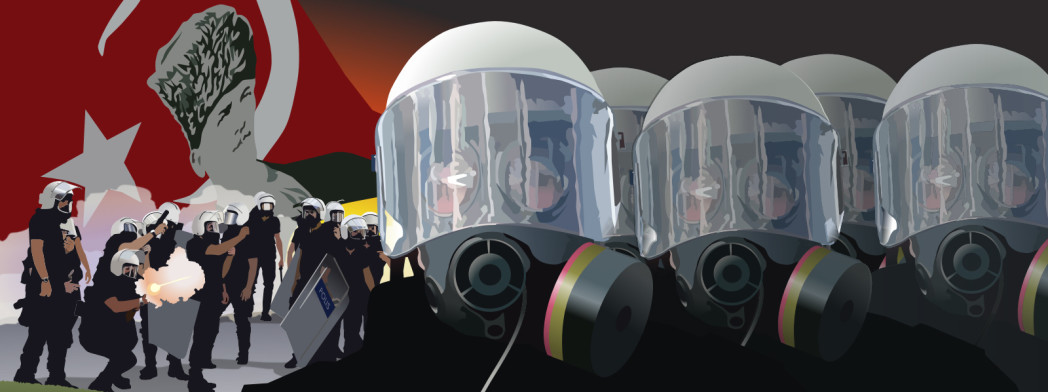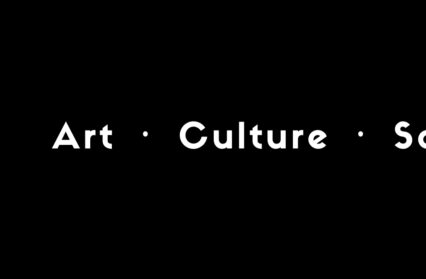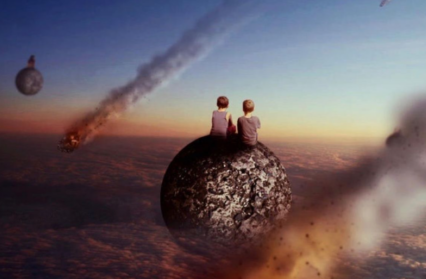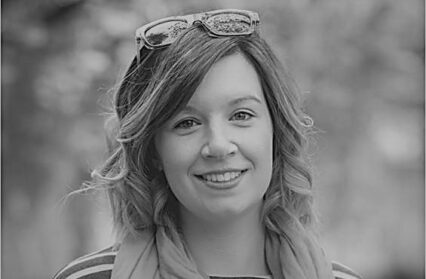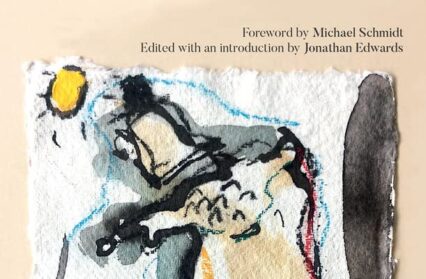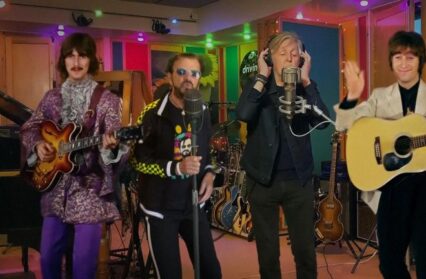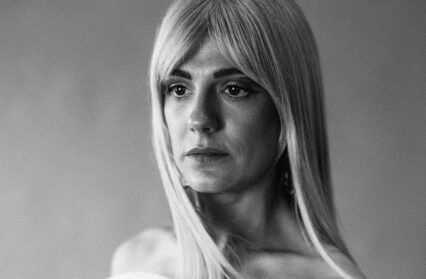In the third instalment of James Lloyd‘s report from the heart of Istanbul, he walks the streets, visits the Istanbul Modern gallery and revisits Gezi Park in the aftermath of its latest clearance.
Istanbul Modern is located in the Tophane district of the city. Back in 2010, during Istanbul’s time as European Capital of Culture, a number of art galleries surrounding the museum were targeted by gangs armed with knives, batons, pepper gas and broken bottles. An international clientèle of artists, writers, academics, and students were assaulted by an organised group numbering up to fifty. According to those in attendance at galleries hosting cocktail parties, there was blood everywhere and many exhibition pieces were destroyed.
A spokesperson for a Tophane artists group released a press statement outlining how a campaign of terror initiated online by certain sections of the Tophane neighbourhood had created an atmosphere of intimidation. Gallery owners, artists and guests had been increasingly threatened and harassed, and stressing that this was unusual in a community with which those whom they attacked had developed a close bond that worked to instigate and develop effective communications. The statement concluded that social and cultural life not only of the district, but of the city, was in danger at a time when it was supposed to be being celebrated.
The Tophane district is located on the western shore of the Bosphorus and derives its name from a 15th century Ottoman armoury long demolished. Formerly the oldest industrial district of the Ottoman Empire, it has frequently appeared impersonal to me, indicative perhaps of a street widening programme in the late-fifties that saw many of its historic buildings demolished. Meclis-I Mebusan Caddesi runs through it, an avenue of seemingly unending traffic that runs parallel to the Bosphorus. One half is a terrace of unimaginative glass buildings, home to banks and insurance companies. A vast oblong shadow is cast over the street during the day.
Istanbul Modern is next to the Salıpazarı docks gateway (also known as Galataport), forming part of the Port of Istanbul. Back in 2006, the Salıpazarı docks were included in a privatization project worth up to $4.3 billion. The coverage includes an investment plan for a complex of marina port for big ships, five star hotels, shopping centres, fair and congress centre, museum and other commercial and touristic constructions. As far as I can tell the project stopped for legal reason, but is now back on the table.
Each time I walk through here I have seen a titanic cruise ship docked parallel to the Istanbul Modern, twice as high as the converted warehouse and blocking all views of the Bosphorus at the front – a disappointment bordering on travesty. On this particular day I was hoping that it wouldn’t be there. I was wrong. From the steps of the Istanbul Modern is the grand Nusretiye Mosque with its uniquely Ottoman baroque-styled design, it also embodies the transition from the former to empire style.
Historically Tophane had been populated by Muslims, Greeks, Armenians and Jews. In the 1950s Turkish families from east and southeast Anatolia, as well as many Romani families, migrated there following the Istanbul Riots to take up jobs working as labourers in the nearby shipyards. They occupied rundown properties or built gecekondu (‘a house put up quickly without proper permissions’) and as middle-class Istanbulians moved away from the city centre, to new, modern housing, a lot of affordable rental properties became available in the area. This mix of people and cultures were said to have existed in a relative peace. However, as time passed, and as the migrants from Anatolia grew, many non-Muslims were allegedly forced from Tophane, and this helped foster a more conservative populace.
More recently Tophane has seen a spate of bars and art galleries open as part of the ‘gentrification’ projects undertaken by the municipality. Traditionally a parochial and impoverished area of Istanbul, this neglected locality, with its traditional and historical buildings, has become fashionable with professional types and young entrepreneurs. Bars, cafes, hostels, and, of course, art galleries, have sprung up. Rents have increased and long-time residents have complained about the new crowd. They have accused them of drinking in the street, of being half-dressed with tattoos on show, and of playing loud music late at night.
As one can imagine this has nurtured resentment in some parts of the community while others are in agreement that the area is benefiting. The blame for the attacks on the two art galleries has of course been posited on the former. Some commentators suggest that it is an upshot of the government’s perceived drift towards Islam and the eventual imposition of a Shariah state. This notion can be dispelled quite easily for it seems there is an incongruity between the seemingly heavy-handed rhetoric of Turkey’s Prime Minister and how the AKP’s policies are actually spearheaded. For instance, the urban regeneration of Tophane was managed by AKP mayor, Ahmet Misbah Demircan, and it is he and his department that have sanctioned the proliferation of bars and art galleries. This is not to say that Turkey’s secular-religious debate doesn’t play into the attacks, but more than anything it would seem that class and the cultural impact following the regeneration of Tophane has been of a much greater consequence.
***
The first space I enter in the Istanbul Modern has paintings that depict 19th and 20th century Istanbul. I am reminded of something Erdogan said recently regarding the protests at Gezi Park: chiefly, that Istanbul had been a desert before he had been elected mayor and that he had brought water to it. (There later appeared in the media satellite images of Istanbul showing how much its landscape had changed over the past four decades, how green areas have been massively eroded and thus proving Erogodan’s claims to be untrue).
In landscape paintings by Fahri Kaptan, Seref Akdik, Hikmet Onat, and especially Mekertich Givanian, Istanbul is depicted as a verdant, romantic city, its natural beauty captured in the vast stretches of countryside and woodland running either side of the Bosphorus and Golden Horn.
Commentators have said that Occupy Gezi has been responsible for the resurgence in so-called ‘political art’. This is true. Then again, isn’t all art in various ways political? The sense of emergency sparked by Occupy Gezi has meant that some observers have been concerned with prioritising the present and therefore regard the various ‘street art’ images as most usable in assessing its impact. However, time is not linear. This flurry of creative activity relating to Gezi Park is better considered when assessing how it corresponds to the work of artists past and present.
I am reminded of one of my favourite books, Ways of Seeing by John Berger. Looking at a painting of Istanbul by Givanian, one of the many 19th century paintings that seems to place an emphasis on the of the relationship between the city and the sea, I stand trying to block out all the sounds echoing around me, to see the painting as it is, silent and still. As Berger suggests, this opens up a corridor almost, a channel between myself and what the painting represents, and in which I contemplate the passage of time and, more significantly, how it is measured.
Before Occupy Gezi, no doubt my fascination and appreciation of Givanian’s painting being a remarkable historical artefact, for his striking treatment of light – even more so in his nocturnal paintings of Istanbul – as well as it being a highly rewarding vicarious experience of the city at that time, would have been obvious. I have no idea what the meaning behind this painting is, what Givanian intended when he chose this particular scene. It might have been his childhood home, an area where he may have sailed or fished as a child, hence why the Bosphorus and Golden Horn play such an integral role in his work.
In Ways of Seeing, Berger draws on the ideas of Walter Benjamin, arguing that technology, in making original works of art reproducible, subsequently multiplies its meanings. There are as many meanings for as many reproductions that have been continually produced. I bring my own personal experiences to the gallery today, of which there are multitude, not only those associated with Occupy Gezi. Whatever Givanian’s original intentions for completing this painting my personal experience of it is no doubt warped.
For many years, Istanbul has resembled in parts a construction site. Super cranes puncture the sky, I see them everywhere. I can walk down a street one week and note a terrace of gecekondu houses and walk down the same street the following week and they will not be there – this has actually happened. Behind the gecekondu had lain the old Galatasaray football stadium. Now it is a cavernous cement bowl, steel rods and girders stick out from places like weeds. An unfinished tower block rises out of it on one side. I see it as a giant headstone to displaced lives and cultures.
For these reasons, the steam ship I see crossing the Bosphorus in the Givanian’s painting, indeed the only sign of modernity in the whole scene, passing two men in a skiff as it goes, suddenly becomes highly symbolic. Not only that, but on the contrary to Erdogan’s description, the painting shares a striking similarity with Constable’s The Hay Wain; in other words, Istanbul was not a desert in the 19th century, let alone when Erdogan was governor here.
Clearly, I have allowed myself to manipulate sections of this painting. Taken as a whole, without isolating the steam ship or the greenery, it may have lost some of the lustre I initially conceived of when I first viewed it. However, the painting has gained much more. I said in my first piece on Occupy Gezi that you cannot build a culture without a heritage. Givanian paintings allow us to critique the current crisis in Turkey, especially Istanbul, in a way that keeps people tethered to the past also by offering a sense of perspective. This works as well if not better than the ‘political art’ generated by the protesters. The stencils of the Twitter bird logo wearing a gas mask and a poster mimicking the artwork Sex Pistols’ God Save the Queen – only this time it’s Erdogan with his tongue sticking out and ‘God Save the Sultan’ emblazoned across his eyes – are humorous and no doubt effective as they carry a cultural commodity that appeals to a large market. And that’s exactly its problem; how effective this approach can be in the long-term, as it results in a kind of commodity fetishism that complements capitalism.
In the next space, I see a 2011 piece by Sabire Susuz entitled, Shopping. It is a collage made up of clothing labels, a fact that becomes apparent only when you are close to it. Previous pieces had been portraits of her family and friends made from their own clothes labels. This one, however, is of a great white shark. Immediately correlations can be made with the demolition of the Emek Theatre noted in my first instalment (historical buildings being swallowed up and replaced by shopping malls.) In a paragraph from her artistic statement on this particular piece it says:
She [Susuz] attempts to question visually, through the use of clothing labels, a form of existence that is limited to brand names and artificial values. Maintaining that clothes bought for their brands, and identities acquired through brand names, will end up looking like a makeshift person.
Again, this statement strikes me as being highly relevant, in that it can be regarded as a component in helping to manufacture the kind of citizen Turkey’s government want to bring into being. This is not to say that their policies are organised in a way that regards people as passive dupes who can be spoon fed an ideology. Far from it. The AK Parti has gone out of its way to ensure that they influence every sphere of culture because they understand people can and will think for themselves. It is an attempt to redirect the wants and desires of the population, to reduce the options and information available, in ways that makes them easier to control, while at the same time making profits for the investors their policies are shaped by. As Nato Thompson, chief curator at Creative Time, New York, says in an interview about the relationship between art and politics:
…every facet of power today comes with its own marketing, communications and advertising teams and budgets, which, in essence, are the gears of culture sewn into the fabric of control. Warhol’s dreams are a political reality that we must now contend with.
Untitled (1970) by Gürkan Coşkun (aka Komet) is one of the paintings that hits me straight in the gut. A group of people, some sitting, almost shivering, others standing, attention turned to an ill-formed darkness coming from the right-hand corner of the painting. Many of the faces remind me of those portrayed in Goya’s Black Paintings; manifest is an ineffable torment. Two head-scarfed women are visible, the most colourful figures in the painting. The men are drenched in shadow. Many faces resemble the African masks that informed Picasso’s Black (or Negro) Period. The dark is thickest in the right-hand but it is creeping into all four corners. They appear doomed.
Applying Komet’s painting to the present, the encroaching darkness can of course be seen as the insidious influence of the government and its private investors, as well as Istanbul’s skyscrapers and tower blocks, throwing blackness on lifestyles and cultures; the people are the city’s dispossessed, watching anxiously, some over their shoulder, into obscurity. They have been left in the dark by a media broadcasting a reality ‘blacked out’ by government media ownership and its far reaching influence, a process that has resulted in self-censorship. Some figures appear to be curled up, trying to keep warm; Erdogan’s attitude is you’re either with us or you’re against us, and if it’s the latter, you get left out in the cold.
None of the three pieces described here go beyond offering an comparative reading on Occupy Gezi and the several factors that caused it to come about as well as its continuing ramifications. I kept in mind the quote I’d used to conclude the last instalment, concerning the need of Erdogan’s opponent to establish an approach that would begin to define a ‘true secularism’, one that ‘contrary to its earlier Kemalist incarnation, requires that the principles of democracy be applied to all members of society.’
There is an exhibition entitled Erol Akyavaş – Retrospective at the Istanbul Modern. Admittedly, I had not come across his work before – same goes for the others – nonetheless I am unlikely to ever forget it. I found myself in the large black-walled alcove at the end of main concourse through the ground floor of the Istanbul Modern. I had passed it first of all and it was only on looking over my shoulder that my attention was caught by a glow of lights. There were two horizontal canvasses on the wall amid three luminous Plexiglas tablets. From where I was stood the two canvasses looked to be showing a snow-capped mountain range or glacier – the left canvas had this image lined across it in rows with proportions far smaller than that of the other canvas, which had only one and which I had based my assumption on it being a mountain range or glacier. I was completely wrong.
Entitled Lament to Ethnic Cleansing in Bosnia, it depicted, a slightly transparent or backlit photograph of a woman prostrate on what I assume was a table. A sheet of tulle resembling a shroud covered her naked body. Considering the distance from which I’d first viewed it, and which, if I’m honest, was with a certain degree of indifference (although not enough for me to not take a closer look), I was humbled. And of course, the ramifications were in themselves highly appropriate. As the statement accompanying the pieces acknowledged, ‘…the distance and indifference of how these events [in Bosnia] were represented.’
I circled the glowing tablets, noting the cryptic inscriptions and then read about their inception:
Hagia Irene (built in the 4th century) is one of the rare buildings that was not turned into a mosque after the conquest of Constantinople in 1453. This is its story: Mara, daughter of the Serbian King, despite have been married to Ottoman Sultan Murat II, and becoming Ide Sultan, does not want to convert to Islam, and remains an active Christian. After the conquest, Mehmet II allocates Hagia Irene to his stepmother and Christian, Valide Sultan Mara, so she can fulfil her religious duties. Valide Sultan Mara is pleased to have her own private church with her own private priests. Thus, when years later she announced her wish to become a nun and retreat to a monastery, her wish was granted and Mehmet II sent her to a monastery close to Thessaloniki escorted by Sipahi cavalry corps.
Akyavaş continues that this story of religious tolerance had a profound effect on him. Over 650 years later and this kind of religious acceptance is impossible to find in the world. Akyavaş’s FIHI MA FIH – What is in it, in it, Three Tablets/Sculptures attempts to realise a syncretic design that reflected the three monotheistic religions, Judaism, Christianity and Islam, which are, as he points out in his statement, ‘historically linked’; moreover, he wished to symbolise ‘the connection and totality that exists between them.’
The religions are represented by three tablets made of massive Plexiglass which is covered by gold leaf on one side with symbols of each religion, as if they were anonymous sketch patterns inscribed by believers. On the other side of the tablets there is a labyrinth related to that religion, reminiscent of a seal: the symbol of the universe from the Kabbalah, the book of Jewish mysticism; the labyrinth from the Amiens Cathedral representing Christianity; and the tablet representing Islam, the Kufi calligraphical rendition by Karahisari of the Surat al-Ikhlas from the Holy Quran.
Akyavaş goes on to delineate the lighting of the tablets that seem to hover against the black walls, changing colour depending on which side they are lit from. Religious or not, the experience is absorbing, a syncretic both primal and otherworldly. ‘I wanted to keep this tolerance alive with three religious representations,’ concludes Akyavaş.
It’s a good start.
***
It is a Monday morning, Gezi Park has re-opened. I go down there as soon as I can and find out that gardeners and cleaners for the Istanbul Metropolitan Municipality have been working all night long for over two weeks. And it shows.
Scrubby patches of grass have been re-turfed. New flowers have been planted, as well as rosebushes and various types of trees – maple, magnolia, lime and oleander. The water fountain is working for the first time in over a decade (or so I am told). And the Park is noticeably cleaner. Benches are occupied by people of all kinds, middle-aged ladies wearing headscarves and sunglasses sit with their newspaper-reading husbands close to a brand new playground full of children playing, mothers and fathers looking on. But most of the people here are like me it seems; seeking. We take some pleasure and feel somewhat bemused on discovering the scene before us. After all, this park was meant to be bulldozed. We are searching for clues, we are our own private investigators, attempting to figure out what this all means.
A May 31st ruling declared that demolition work be suspended on Gezi Park and having met with a group of representatives PM Erdogan declared that he would follow the court ruling provided the protesters evacuate the park (‘because the park is for everyone’), which they duly did. Of course it is true that the park is for everyone, but wasn’t that the point of the protests in the first place? That the redevelopment plans of Gezi Park and Taksim were not for everyone and were in fact undemocratic as the process did not engage with ‘everyone’.
Gezi Park as it was, the culture it spawned, the humour, creativity and altruism, had to move on. And, as I have written before now, it has. The ideologies that underpinned it continue to evolve and occupy an indeterminate space, both mental and physical. Whether those who took part in the protests and more specifically if the members of Taksim Solidarity can or want to plan long-term and organise themselves in such a way so as to register a new political party is up for debate. (This in itself poses a number of problems with regards to funding and passing the 10% voter threshold that allows one to enter parliament).
On this morning, one in which the atmosphere is charged with expectation, I hear rumours that there is to be a Taksim Solidarity gathering at 7pm in order to remember those who have died. Others say it’ll be a protest march. In fact, nobody is really sure. There are small groups of teenagers in the park with construction site hats and who are clearly looking to continue where things left off before police cleared Gezi Park of protesters. Backpacked and with a supply of surgical masks, some wearing ‘V for Vendetta’ masks, they are rolling around in the grass having fun. Other than that there is little sign of anyone here making a move to protest aside perhaps from a silver-haired gentleman sat on a bench with an Ataturk flag. People lie on the grass reading a book or sit with a group of friends chatting.
There is still a large police presence outside the AKM building. It has been made clear that they will no longer tolerate any protesting in the park or on Taksim Square, emphasising that peaceful protests can only occur in designated areas, however, where these areas are remains something of a mystery. Whenever protests have started up over the past few weeks, protesters have been chased from pillar to post. Indeed, if the situation wasn’t so serious, if five people hadn’t been killed, at times it resembles a caper of sorts. It is clear too that the protesters have seen it in such a way. There are slogans such as ‘teargas is our perfume’ and the creation of a Gezi Park computer game where the player has to guide a gas-masked protester around Taksim Square, avoiding the mounting police who give chase sending as many Tweets as possible (my highest score so far is 29).
Heading to the south of Gezi Park in the late afternoon I see that a small crowd is looking out onto Taksim Square. When I join them the scene I witness is ominous. The police numbers have increased massively and they are wearing riot gear. They have assembled at various strategic locations, one of which is to the south east of Gezi Park with a human chain of plain clothed and uniformed officers blocking the entrance to the park. My first thought is to leave and to tell those inside the park who, unless notified by friends or by checking the internet on their smartphones, wouldn’t know about what is going on around them. I watch the police block all entrances to Taksim Square and then wonder about the north of the park as it seems likely that they would be gathered there too. When I get there the police are outside The Divan Hotel lined up in riot gear alongside the buses that brought them here. People are able to leave the park, but most seem unaware, and I notify a few of those with children. I walk past the police who all look exhausted. Their faces are hollow and the skin around their eyes is dark.
***
The neighbourhood of Cihangir is celebrated as the home of Istanbul’s artists and intellectuals. People say the area has been deliberately targeted by the police because of this and judging by the amount of teargas expended here it would seem they have a point.
Turkey’s PM does not shy away from exhibiting his resentment of those who he perceives to have ridiculed his once marginalised conservative base. In a speech at one of the rallies he played on this class resentment:
The potato-head bloke, itching his belly — this was how they regarded us for decades…They think we do not know anything about politics, arts, theatre, cinema, poetry, paintings, aesthetics, architecture.
In the past, Erdogan has criticised ballet as an ‘indecent art’ and has considered the celebration of the New Year as a ‘degenerate imitation of the Western Culture.’ Following the establishment of the Republic of Turkey, it is difficult not to see Ataturk’s attempts to impose the Western values that characterised the Enlightenment as having an impact on Erdogan’s thoughts and actions, and with good measure.
Ataturk’s policy was to aggressively pursue an elitist ideal whereby the uptake of opera, ballet, painting, and classical music (i.e. high culture) was effectively non-negotiable. It was a state dictated culture. The upshot of this is obvious. As a Kemalist Elite formed, many people with more traditional lifestyles and attitudes were alienated and their culture essentially censored or displaced. It is these people who Erdogan is speaking to when he says, ‘They think we do not know anything about politics, arts, theatre, cinema, poetry, paintings, aesthetics, architecture.’
Under Erdogan however, art and culture has increasingly fallen into the hands of private companies. In an academic paper by Simone Pekelsma, I discover that the Istanbul Modern is owned by Eczacıbaşı Holding, an industrial group of companies with a combined net turnover of 2.6 billion in 2012; the Pera Museum is owned by Kıraça Holding, and then there is the Platform Garanti Contemporary Art Center (Garanti Bank); the Yapı Kredi Culture and Arts Centre (Yapı Kredi); the Tünel Sanat gallery (T.C. Ziraat Bank); and Akbank Sanat (Akbank).
The plans to redevelop Taksim and Gezi, the proposed redevelopment of Galataport, the regeneration projects continuing and completed at Tophane and Sulukule as part of the Capital of Culture programme – it seems reasonable to say that culture, as viewed by the AK Parti, is an as asset to be used to attract tourists.
In the same academic paper by Pekelsma, it is noted how at the Cities and Cultural Industries in the 21st Century Conference in 2007, the then mayor of Istanbul, Kadir Topbaş, stated in the programme booklet that:
…developing cultural industries will be a development dash for our country’s economy which is a host to many various cultures and civilizations. Istanbul has comprehended the present and future strategic importance of cultural industries. With this in mind, Istanbul’s contribution to economic gains of the sector and the socio-cultural activities enrichment cannot be far sighted.
The impetus behind gentrification projects and others is made even clearer in a further passage: ‘adopt a pragmatic approach and to advocate a kind of neo-liberalism which promotes the central involvement of private capital in running cultural affairs.’ To this we can add that the arts and culture in Turkey are subject to further constraints when we consider that many of the artists involved and their ensuing projects are subject to the approval of the government and its conservative leanings. Cultural projects are guided by short terms profits often under the umbrella of some festival or other. Owing to their sporadic nature and restrictedness, they are unsustainable.
***
Today is the first day of Ramadan. Iftar tables adorned with white cloths have been set up by the Beyoğlu Municipality on Taksim Square to seat up to 400 people.
Yesterday police moved into the Gezi Park and used teargas and water cannons to clear it of people. I’m still struggling to find out why on the day the park opened, when there was no-one protesting, did they clear the park? They arrested 40-50 people, mostly members of Taksim Solidarity and later they ransacked several of their homes. A 17 year old boy, visiting Taksim and Gezi for the day, was hit in the head by gas canister fired by a policeman. He remains in a critical condition in hospital.
The Iftar tables on Taksim resound with the ‘table operations’ instigated by the government in 2010. It is a provocative move by a government given that impact it had on the lifestyles and culture of one group. They seem to be privileging one over the other. There was a reaction. People lay newspaper from the Taksim end of Istiklal down to the Galatarsaray High School, quite a stretch. They sat down and brought their food with them, others joined in, including tourists. When the police moved in to disperse this ‘unofficial’ iftar – a reaction, as I said, to the over-the-top, white-clothed tables out on Taksim Square – people offered them food. They parked a TOMA sideways and stood guard blocking anyone else that tried to enter and warned that once they had finished their fast that they should leave. Chants of ‘Taksim is here, Taksim is Everywhere’ rang out as people remained defiant and stood their ground. In the end, the police seemed to give in and let them pass onto Taksim Square and into Gezi Park. A humble victory.
Banner illustration by Dean Lewis


